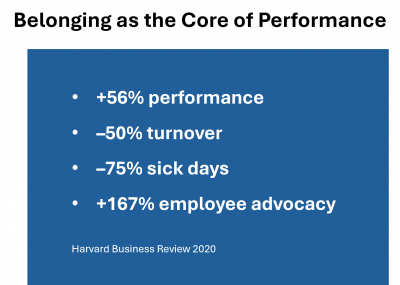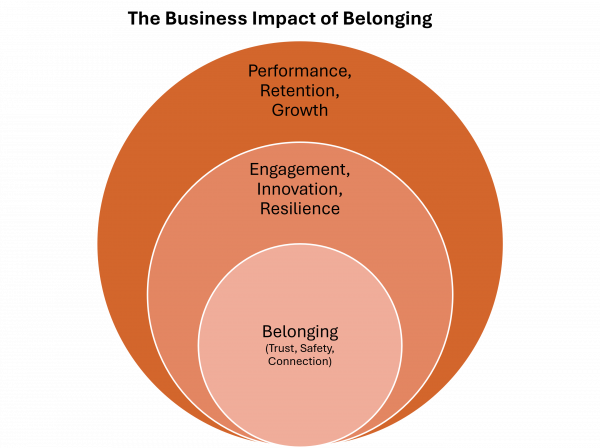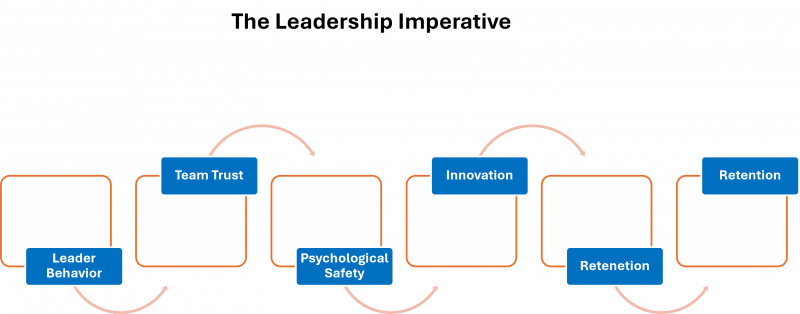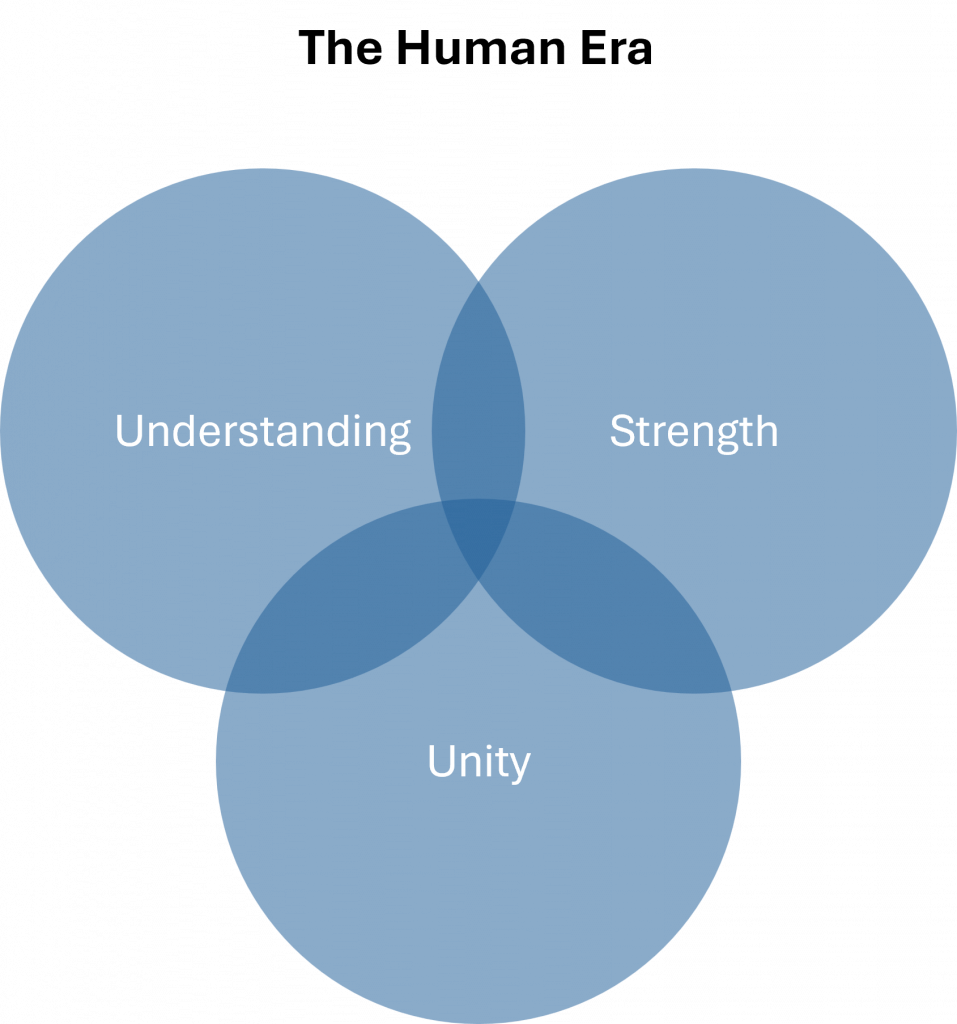Belonging transforms performance because it transforms identity.
When people feel seen, valued, and included, their mindset shifts. They stop viewing their work as a transaction and begin to see themselves as contributors to something larger. In that shift, performance, creativity, and resilience multiply.
Belonging is not about comfort. It is about connection, contribution, and trust.
In a world that measures engagement by metrics and monitors connections through screens, the leader’s most strategic work is to rebuild a sense of belonging. It is the foundation on which collaboration, innovation, and well-being rest.
Belonging Is the Behavioral Expression of Trust
Human beings are wired for connection. From the earliest societies, belonging meant survival. Being part of a tribe was safety; exclusion was danger. Our brains still interpret isolation as a threat.
Neuroscience shows that social rejection activates the same neural pathways as physical pain. Connection, in contrast, releases oxytocin and serotonin, lowering stress and building trust.
Belonging is therefore not a workplace preference. It is a biological need. It creates the emotional safety that allows people to focus, share ideas, and take risks. When people belong, they shift from self-protection to shared purpose.
Interpersonal Neurobiology describes the mind as both relational and embodied. Our mental health depends on integration, being connected within ourselves and with others. In organizations, that integration becomes a cultural phenomenon. When trust, empathy, and openness exist between people, the system itself becomes healthier.
Belonging, then, is trust in action. It is how people express that they feel safe enough to be honest, creative, and fully engaged.
The Science Behind Belonging


Research consistently confirms what experience tells us.
The 2024 Indeed Work Wellbeing Report, one of the most extensive global workplace studies with over 15 million participants, found that belonging ranked as the number one driver of employee well-being, surpassing pay, benefits, and flexibility. Employees who feel connected report higher satisfaction, lower stress, and greater commitment to their organizations.
Harvard Business Review’s “The Value of Belonging at Work” quantified this impact:
- Job performance rises by 56 percent.
- Turnover risk drops by half.
- Sick days decline by 75 percent.
- Employees are 167 percent more likely to recommend their organization to others.
The Global Flourishing Study reinforces this at a societal level. Across 22 countries, relationships ranked as one of the most consistent predictors of well-being. Human flourishing depends as much on connection as on health or security.
Gallup’s 2025 Global Workplace Report highlights the cost of losing this connection. Engagement has declined worldwide, and only one-third of employees describe themselves as thriving. The estimated global cost of disengagement is $9.6 trillion. The opportunity to recover that value begins not with new systems but with stronger relationships.
The data is clear: belonging and connection are not soft ideas. They are hard business metrics.
How Belonging Changes Mindsets
When belonging takes root, it alters how people perceive their role within the organization. Employees who feel connected imagine a future with their company. They see themselves in the story and invest their energy in helping it grow.
This shift is visible. People collaborate more, take initiative, and recover faster from setbacks. They focus less on protecting their position and more on advancing the shared goal.
Max De Pree wrote that a healthy organization is one where people are cared for as individuals and have the opportunity to do their best. That combination of care and contribution is the essence of belonging.
Belonging also builds resilience. Connection reduces stress and creates a sense of shared stability. Teams that trust one another adapt faster to change because they know they will not face challenges alone. They communicate openly, take measured risks, and support one another through uncertainty. Over time, this culture of mutual reliance strengthens both individuals and the organization.
Connection as the Root of Collaboration and Innovation


Innovation depends on psychological safety. People need to feel that they can share their ideas without fear of criticism or exclusion. Belonging creates that safety. When people trust that they are valued for who they are, they contribute more freely. Differences in thought become productive rather than divisive.
Deloitte’s “Super Teams” research describes how humans and technology work best together when united by shared purpose. Teams with strong belonging channel diversity into creativity. They debate ideas without personal conflict because they trust one another’s intentions.
In this way, belonging becomes the soil in which innovation grows. Ideas cross boundaries more easily, and collective intelligence expands. Collaboration becomes natural because connection has already created the conditions for it.
The Leadership Imperative

Leaders today are not only strategists or decision-makers. They are designers of relational systems. Their role is to create the conditions in which trust, respect, and connection thrive.

Chris Voss, in Never Split the Difference, writes that people feel secure when they are heard and understood. In organizations, that principle builds loyalty. Leaders who listen deeply, who make people feel seen, generate the psychological safety that fuels engagement.
Dale Carnegie expressed the same truth a century ago: people respond to genuine appreciation and recognition. These small human gestures accumulate into cultural strength.
Max De Pree described leadership as a covenant, not a contract. It is a mutual promise of respect, care, and opportunity. Leaders who practice this covenantal mindset understand that relationships count more than structure. They create environments where people can develop high-quality relationships, not just complete high-quality tasks.
Belonging is therefore not solely HR’s responsibility. It is a daily leadership practice. It is evident in how decisions are communicated, how feedback is provided, and how people are included in the organization’s story.
When leaders intentionally design connection into their systems—through mentoring, cross-functional collaboration, and open recognition—they build organizations that are both humane and high-performing.
The Competitive Advantage of Belonging
Connection is not the opposite of productivity. It is the source of it. Belonging builds the trust that sustains performance and the cohesion that endures through disruption.
Organizations that prioritize belonging gain an advantage that is difficult to copy. Competitors can replicate products, technology, or processes, but not culture. The most resilient companies are those where people feel they belong to something worth protecting.
The future of leadership will belong to those who understand this truth. Strategy and structure matter, but it is the strength of human connection that determines whether those strategies succeed. A culture of belonging does not remove accountability; it amplifies it, because people care more when they feel they are part of something meaningful.
Belonging is not sentimental. It is structural. It shapes how people think, act, and stay. It is the invisible infrastructure of great organizations.
Final Reflection


- Communication builds understanding.
- Struggle builds strength.
- Belonging builds unity.
Together, they define what it means to lead in a human era. When leaders cultivate a sense of belonging, they do more than just improve morale. They create places where people can flourish—where connection itself becomes the most powerful force for performance, trust, and lasting growth.
Sources and References
- Indeed (2024). Work Wellbeing Report Global 2024.
- Harvard Business Review (2020). The Value of Belonging at Work. Harvard Business Review Analytic Services.
- VanderWeele, T. J., et al. (2023). Flourishing: A Comprehensive Measure of Human Well-Being. Harvard Human Flourishing Program.
- Gallup (2025). State of the Global Workplace Report 2025. Gallup, Inc.
- Harvard Human Flourishing Program & Baylor University (2023). The Global Flourishing Study.
- Voss, C. (2016). Never Split the Difference. HarperCollins Publishers.
- Carnegie, D. (1936). How to Win Friends and Influence People. Simon & Schuster.
- De Pree, M. (1989). Leadership Is an Art. Doubleday.
- Deloitte Insights (2021). Superteams: Putting AI in the Group. Deloitte Global Human Capital Trends Report.
- Siegel, D. J. (2012). The Developing Mind. Guilford Press.
- Maslow, A. H. (1943). A Theory of Human Motivation. Psychological Review.
www.moorhousegroup.com
